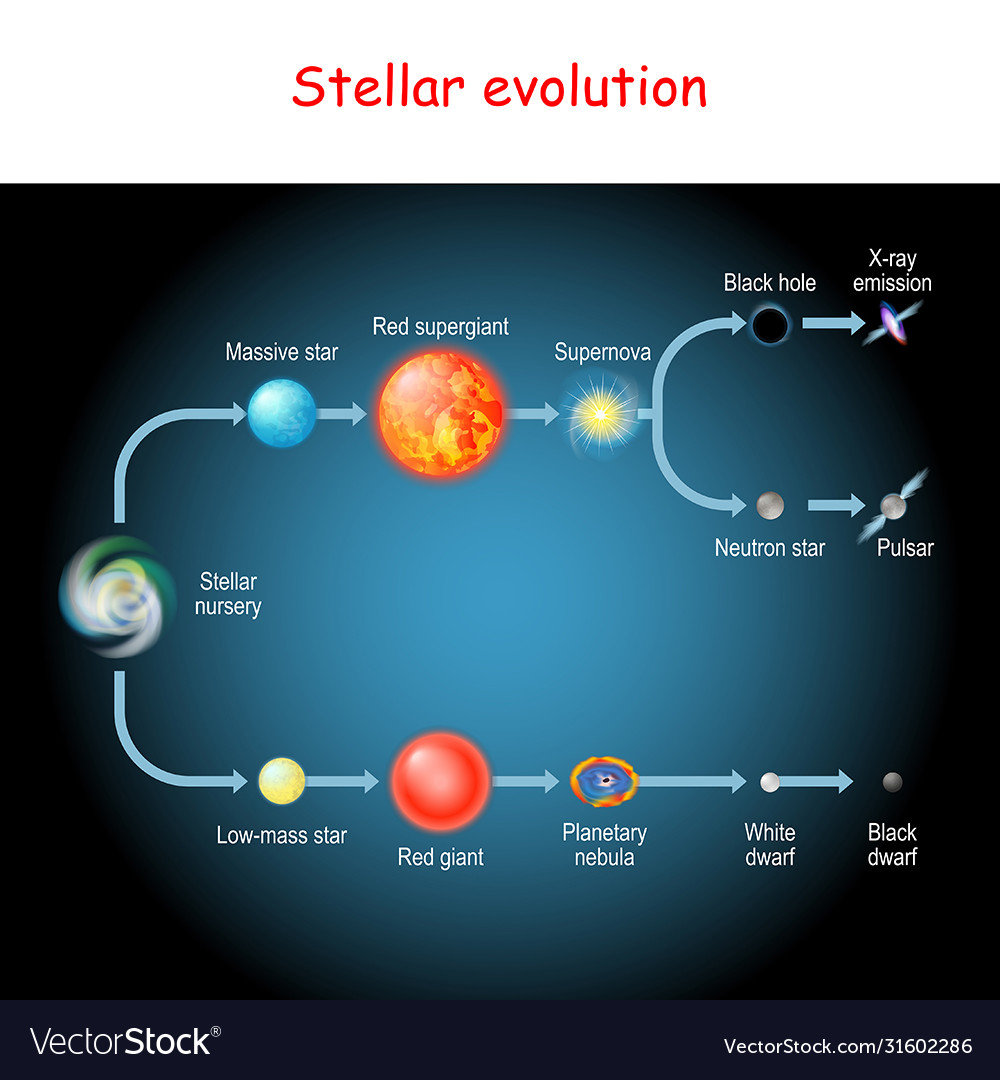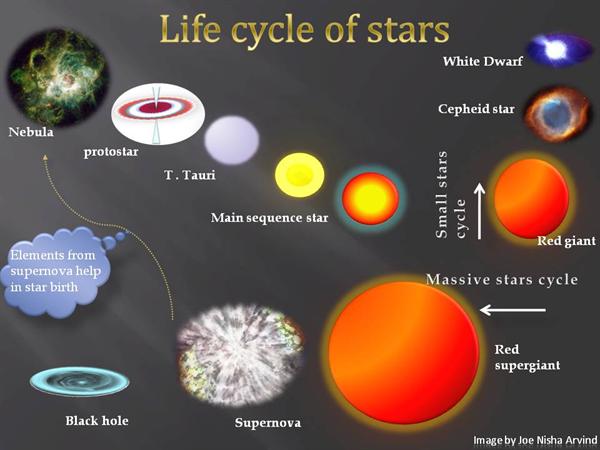

The Red Supergiant stage, and is burning helium in a shell around the inertĬarbon core, the core can reach a high enough temperature (600 million K)įor carbon to fuse into heavier elements! This is different from the Helium in its core, but the rate is so high that the star runs out of helium The star slowly moves back toward the Main Sequence, and burns The helium core is so hot that nuclearįusion begins there slowly over time, without degeneracy pressure becomingĪ factor. It expands into a Red Giant stage just like we saw for low mass stars.īut there is no helium flash. To run out of hydrogen in the core, and starts burning hydrogen in the shell, Pressure, that helps support the star against gravity.īurning hydrogen to helium in its core, and so it is sitting on the Main Sequence.ĭepending on its mass, it may live only 1-100 million years in this stage-much

When we said that the dust tails of comets are swept away by light pressureįrom the Sun? In a similar way, the photons produced in the CNO cycleĪre numerous enough to cause a significant pressure, called radiation The proton-proton chain does, but faster.įaster power generation is that more photons are produced.

The net result is to combine four protons into a helium nucleus, just as The carbon is not used up in the reaction, and survives to react again. Nucleus splits into a helium nucleus and the original carbon. (hence the name CNO), each time absorbing a proton, until in the end the Larger nucleus, starting with carbon, then to oxygen, then to nitrogen Here is the reaction, step by step: The steps build a larger and The CNO cycle uses carbon as a catalyst, in whichĬarbon is used in the reaction, but in the end the carbon is returned to be

Happens in the slow, proton-proton reactions that we discussed earlier.įor high mass stars, there is a faster mechanism to convert hydrogen to helium,Ĭalled the CNO cycle, but it requires a higher core temperature than occurs In low mass stars, the burning of hydrogen to helium in the Main Sequence stage We will treat that in a moment, but first let's lookĪt how high mass stars differ from low mass stars in nuclear burning. In our earlierĪnalogy of a pressure cooker, high-mass stars have a heavy "lid," Stars have so much mass that they can survive this phase. In a planetary nebula phase, but high mass Moves toward (but not quite to) the Main Sequence again.Įxhausted, the star begins helium burning in a shell around an inert carbonĬore while moving again up the H-R diagram to become a Red Supergiant.īy expelling their outer layers due to thermal pulses Suddenly, at the heliumįlash, the degenerate core starts burning helium and the star Helium core while moving up the Red Giant Branch.Įxtreme pressure raises the temperature to 100 million degrees, where heliumīurning becomes possible. Is exhausted, the star begins hydrogen burning in a shell around the degenerate Recall that these stages for low mass stars are: Very similar stages of their lives that we saw for the low mass stars. Of order 10 million years on the Main Sequence. Type O and B stars, and as we saw earlier, they live only a short time Times the mass of the Sun are called high-mass stars.


 0 kommentar(er)
0 kommentar(er)
